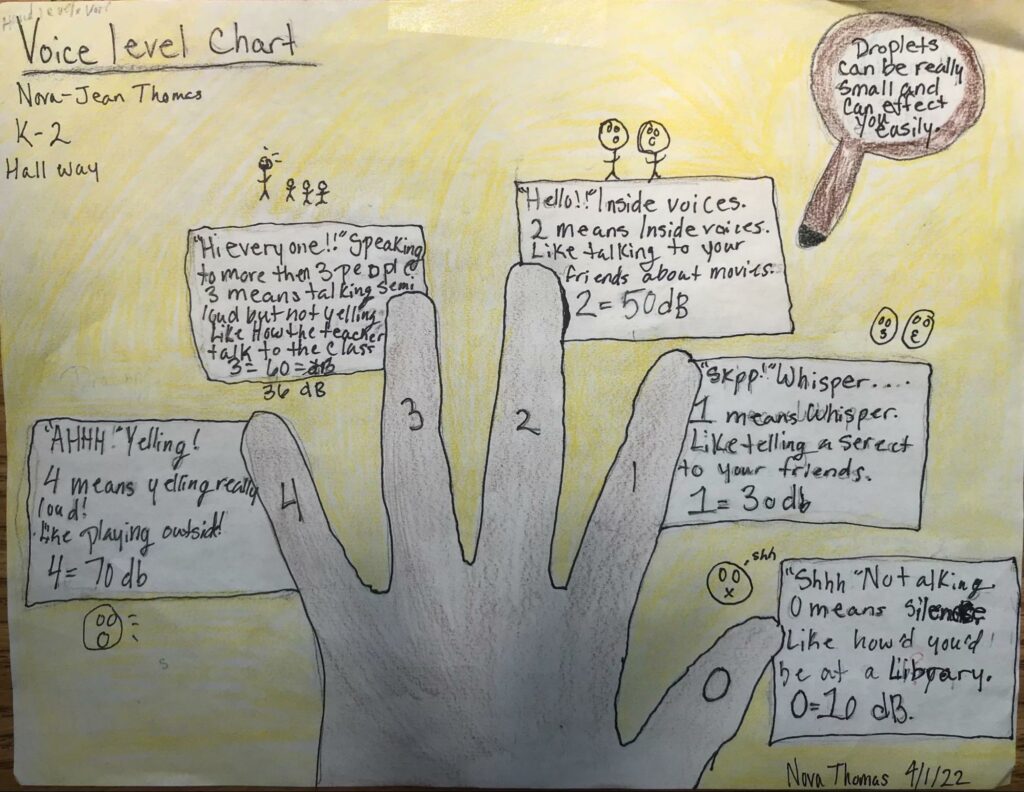
“This diagram is a hand representation of our Voice Level chart at The James and Grace Lee Boggs School. For younger kids who find it harder to understand the current chart, I think it would be best to have a diagram that is familiar to them and appealing. I hope this makes it easier to stay safe at school with cleaner air and less germs transmitted.” – Nova
This is an adaptation of a voice level chart that students use at the Boggs School to manage the loudness of their voice. The original chart has a range from 0 to 4 with description included. Students explored voice level and the connection to air quality by attempting to incorporate decibels (dB) and droplet spread, with or without masks. This exploration allowed students to share what they learned about contributing to clear air in a pandemic in a non-threatening way. I hope you find it helpful!
By: Nova, 8th Grade
Teacher: Charlene Jones, The James and Grace Lee Boggs School, Detroit
Subject: Math
Theme: General Place-based Education
Type: Diagram


I love the faces next to the boxes. You could create new emojis!
It is so helpful to have a graphic representation of important information. The way you arranged the images helps my understanding.
I love the clear way that this illustration conveys the voice level chart! I also am impressed with the connections you have made between this voice level chart and current issues with the spread of covid and the science of airborne particles and sound!
I love how clear and engaging and visual the hand is – well done, Nova! Is there a voice level you recommend to minimize droplet spread? This could apply in other schools and spaces, too.
The examples used for WHEN to use different levels is great! I love the incorporation of art in this project!
This is so cool! I really like how you all pointed out that even with something like talking, we have to be careful and keep in mind how germs are spread. The visuals help me understand it even better. Well done!
Wow! This really made me think. I never thought about how lowering our voices would improve air quality. Thank you so much for doing this research.